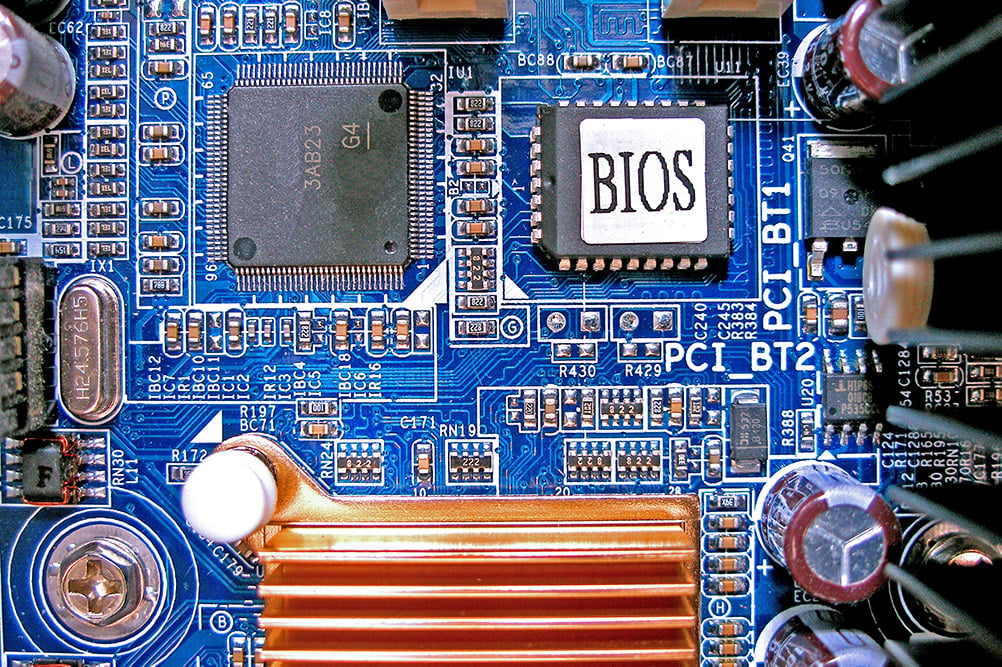Do I have to update the BIOS manually?
In general, you don’t need to update your BIOS that often. Installing (or “flashing”) a new BIOS is more dangerous than updating a simple Windows program, and if something goes wrong in the process, you could freeze your computer.
Can you update the BIOS directly?
The easiest way to update your BIOS is directly from the settings. Before starting the process, check your BIOS version and motherboard model. Another way to correct it is to create a DOS USB drive or use a Windows-based program.
How can I update my system BIOS?
Press Window Key+R to access the “RUN” command window. Then type “msinfo32” to open your computer’s system information log. Your current BIOS version is listed under “BIOS Version/Date”. Now you can download your motherboard’s latest BIOS update and update utility from the manufacturer’s website.

Do I need to update BIOS to the latest version?
It is important to update your computer’s operating system and software. BIOS updates won’t make your computer faster; they generally won’t add new features you need and may even cause additional problems. You should only update your BIOS if the new version contains the required improvement.
How do I know if my BIOS needs an update?
Some will check if an update is available, while others will only show you the current firmware version of your current BIOS. In that case, you can go to the download and support page for your motherboard model and see if a firmware update file is available that is newer than the one currently installed.
How long does it take to update the BIOS?
The BIOS flash can take several minutes to several hours. Once the BIOS update is complete, your computer will reboot. It is very important not to interrupt the power supply to the computer. Any interruption can corrupt the BIOS and render your computer useless.
Why should you update your BIOS?
Some reasons for updating the BIOS are Hardware updates: Newer BIOS updates allow the motherboard to correctly identify new hardware such as processors, RAM, etc. If you’ve upgraded your processor and the BIOS doesn’t recognize it, a BIOS flash may be the answer.
How do I check my BIOS settings?
Use Command Prompt Windows Logo Key + S -> Type cmd in the search box -> Click on Command Prompt. Type wmic bios get smbiosbiosversion -> Enter -> Check your BIOS version number.
How do I know if I have UEFI or BIOS?
To check if your computer uses UEFI or BIOS, Press the Windows + R keys simultaneously to open the Run box. Type MSInfo32 and press Enter. In the right pane, find “BIOS Mode”. If your PC is using BIOS, Legacy will be displayed. If it uses UEFI, UEFI will be displayed.
What is a BIOS version?
Description. A computer’s BIOS is the firmware interface between a computer’s hardware and the operating system. Like any software, the BIOS can be updated. Knowing the BIOS version of the computer will tell you if you have the most recent version of the BIOS.
What do BIOS updates do?
Like operating system and driver revisions, a BIOS update includes feature enhancements or changes that help keep your system software current and compatible with other system modules (hardware, firmware, drivers, and software), security updates, and increased stability.
How do I stop the BIOS update?
Disable the additional updates, disable the driver updates, then go to Device Manager – Firmware – right-click and uninstall the version currently installed with the ‘uninstall the drivers’ box checked. Install the old BIOS, and from there, you should be fine.
Do I need to update my drivers?
Ignoring device driver updates is a common cause of serious computer problems. You should always make sure that your device’s drivers are properly updated. Not only will this keep your computer in good working order, but it can also protect it from potentially expensive problems later on.
Does the B550 need a BIOS update?
Yes, if you purchase an X570 or B550 motherboard from Computer Lounge, you will still need a BIOS update.
What is UEFI mode?
UEFI stands for Unified Extensible Firmware Interface. UEFI provides a faster boot time. It does the same job as a BIOS. Still, with one fundamental difference: it stores all initialization and boot data in a . UEFI supports disk sizes up to 9 zettabytes, while BIOS only supports 2.2 terabytes.
How do I get into UEFI BIOS?
Accessing UEFI (BIOS) from Settings Open Settings. Click Update & Security. Click Restore. In the “Advanced Startup” section, click the Restart Now button—source: Windows Central. Click Troubleshoot. Click Advanced options. Click on the UEFI Firmware Settings option. Click the Restart button.
What happens if a BIOS update fails?
If your BIOS update procedure fails, your system will be unusable until you replace the BIOS code. You have two options: Install a replacement BIOS chip (if the BIOS is in a socket chip). Use the BIOS recovery feature (available on many systems with surface-mounted or soldered BIOS chips in place).
How do I know if my BIOS is successful?
You can also find your BIOS version number in the System Information window. On Windows 7, 8, or 10, press Windows + R, type “msinfo32” in the Run box, then press Enter. The BIOS version number is displayed in the System Summary panel. Look at the “BIOS version/date” field.
How big is a BIOS update?
The size of the BIOS and the capacity of the ROM, EEPROM, or other media on which it can be stored has increased over time as new features have been added to the code; BIOS versions up to 32 megabytes in size now exist.
